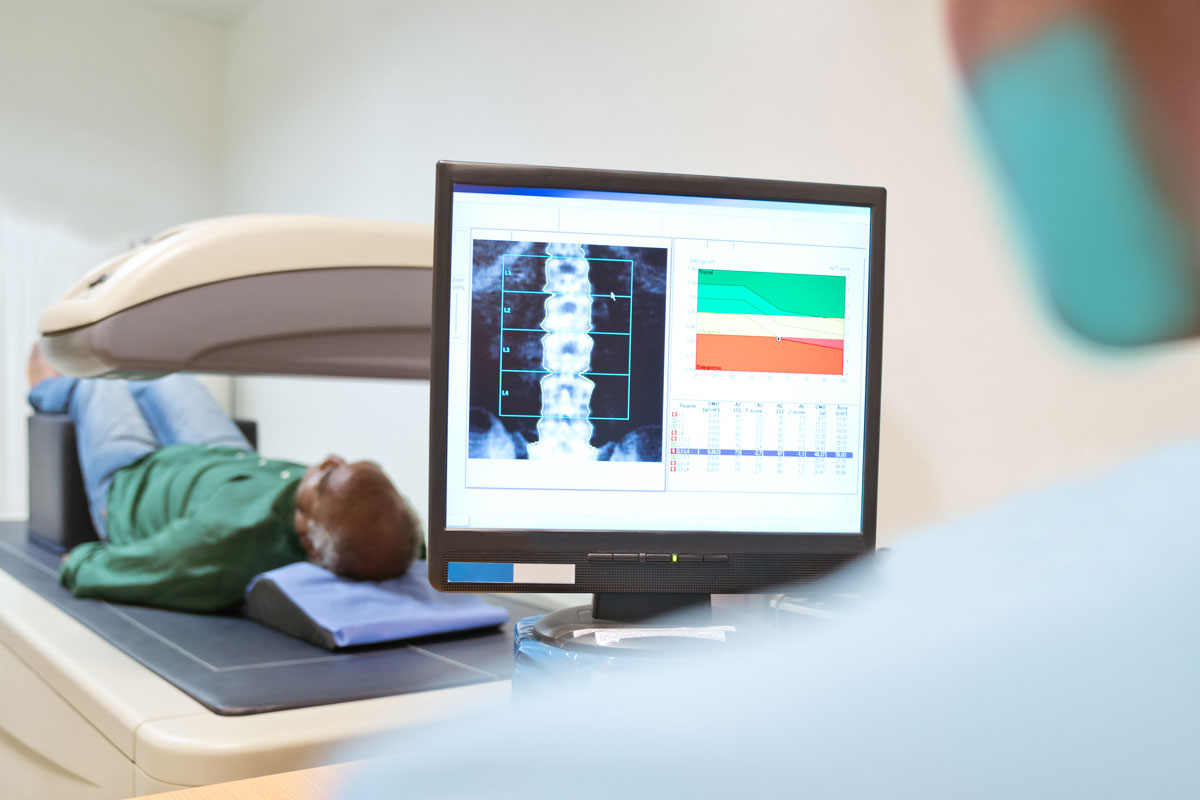
A DXA scan (bone density test) is a quick, painless way to check your bone health. It’s similar to a regular X-ray, but measures the strength and mineral content of your bones instead of just taking pictures of them. Providers use DXA scans to screen you for osteoporosis, osteopenia and other conditions that can silently weaken your bones.
Contents Arrow DownA DXA scan is an imaging test that measures the strength of your bones. It uses X-rays to measure your bone density. DXA is an abbreviation for dual-energy X-ray absorptiometry.
Healthcare providers sometimes refer to DXA scans as bone density scans, DXA scans or bone density tests. All of these are different names that refer to the same test. They used to be known as DEXA scans or DEXA tests, but healthcare providers don’t use that term anymore.
A healthcare provider might use a DXA scan to check your bones in a few situations, including to:
Your provider might use a bone density test to see how your bones have changed over time, including:
Anyone might need their bone density checked with a DXA scan. Your healthcare provider will suggest one if they want to check your bone density and fracture risk.
Some people have a naturally higher risk of developing osteoporosis and other conditions that affect their bone density. Groups who need regular DXA scans include people:
People younger than the ages above who have an increased risk of bone loss may need regular DXA scans, too. Your provider will tell you when (and how often) you should get your bone density checked.
Some health conditions or certain medications can increase your risk for bone density issues, including:
Cleveland Clinic is a non-profit academic medical center. Advertising on our site helps support our mission. We do not endorse non-Cleveland Clinic products or services. Policy
A bone density scan uses low levels of X-rays to measure the density and mineral content of your bones. It’s similar to a typical X-ray. That’s what the X in DXA stands for.
DXA scans are outpatient procedures, which means you won’t have to stay in the hospital. There are no needles or injections in this test, and you won’t feel any pain.
You might be able to wear your regular clothes during the test, or you may have to change into a hospital gown.
Here’s how a bone density scan works:
A bone density scanner uses two types of low-level radiation to translate your bone density into pictures and graphs on a computer. Your bones will show up as white. Fat, muscles and other soft tissue will look like dark shadows in the background of the test images.
You probably won’t have to change your usual routine before having a bone density test. In general, you can:
If you take a calcium supplement or other over-the-counter (OTC) vitamins, don’t take them 24 hours before your test. Tell your provider which vitamins and supplements you take. They’ll let you know which ones you can or can’t take before a DXA scan.
You won’t be able to have a DXA scan within 24 hours of certain other kinds of imaging tests. Tell your scheduler when you’re having other tests before you make your DXA scan appointment.
A bone density test usually lasts around 30 minutes. Your test might be slightly shorter or longer depending on how many of your bones need scanning.
There are very few risks to having a bone density test. You won’t feel any pain or have any side effects after the scan.
Pregnant people shouldn’t have a bone density test. Tell your provider if you’re pregnant or think you might be pregnant. DXA scans use such a low level of radiation that they’re harmless for almost everyone, but pregnant people should avoid all forms of radiation if possible.
Some studies have found that results and readings from DXA scans can vary between manufacturers of the scanning machines, but that’s not usually something you need to worry about. Your provider will monitor changes in your bone density over time and will suggest repeated or different tests if needed.